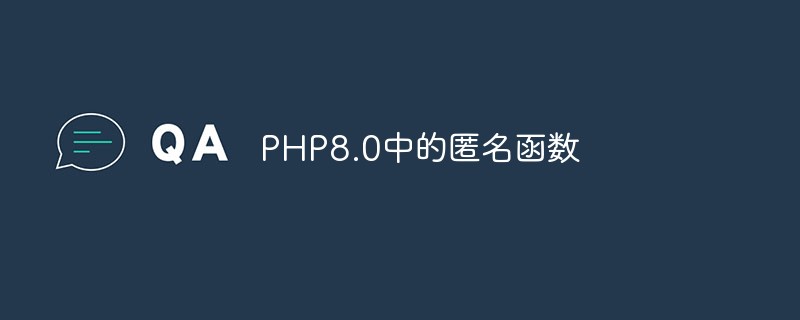
Go language is an efficient, concise and powerful programming language with strong concurrency performance, and its function characteristics are also an important part of its design. Through specific code examples, we can have a deeper understanding of some features of functions in the Go language.
1. Function declaration
In Go language, the function declaration format is as follows:
func function_name(parameters) return_type {
// 函数体
}The sample code is as follows:
package main
import "fmt"
func add(a, b int) int {
return a + b
}
func main() {
result := add(3, 5)
fmt.Println("3 + 5 =", result)
}In the above sample code, we define a function named add, which accepts two parameters of type int and returns their sum. Call the add function in the main function and output the result.
2. Anonymous functions
In addition to ordinary functions, Go language also supports the use of anonymous functions. The sample code is as follows:
package main
import "fmt"
func main() {
add := func(a, b int) int {
return a + b
}
result := add(3, 5)
fmt.Println("3 + 5 =", result)
}In the above sample code, we use the characteristics of anonymous functions to directly define an add function in the main function, then call it and output the result.
3. Multiple return values
Function in Go language can return multiple values, which is very convenient in some cases. The sample code is as follows:
package main
import "fmt"
func divide(a, b int) (int, int) {
return a / b, a % b
}
func main() {
result1, result2 := divide(10, 3)
fmt.Println("10 / 3 =", result1)
fmt.Println("10 % 3 =", result2)
}In the above sample code, we define a divide function that accepts two parameters of type int and returns their quotient and remainder. Call the divide function in the main function and output the result.
4. Function as parameter
In Go language, functions can be passed as parameters to other functions. The sample code is as follows:
package main
import "fmt"
func add(a, b int) int {
return a + b
}
func calculate(a, b int, operation func(int, int) int) int {
return operation(a, b)
}
func main() {
result := calculate(3, 5, add)
fmt.Println("3 + 5 =", result)
}In the above sample code, we define a calculate function, which accepts two int type parameters and a function as parameters, and then calls the passed in function to calculate and return the result. . Call the calculate function in the main function and pass the add function as a parameter.
Through the above code examples, we can learn more specifically about some features of functions in the Go language, such as function declarations, anonymous functions, multiple return values, and functions as parameters. These features make the Go language more flexible and powerful in handling various programming tasks.
The above is the detailed content of Understand the function features in Go language. For more information, please follow other related articles on the PHP Chinese website!
 Golang函数的匿名函数应用场景分析May 16, 2023 pm 10:51 PM
Golang函数的匿名函数应用场景分析May 16, 2023 pm 10:51 PM作为一门现代化的编程语言,Golang(又称Go语言)具有众多强大的特性。其中,匿名函数是Golang的一个非常重要的概念,被广泛应用于各种场景中。在本文中,我们将深入分析Golang函数中匿名函数的应用场景。事件处理器在事件处理器中,匿名函数是一个非常方便和实用的工具。可以通过匿名函数向事件处理器传递自定义的逻辑,比如:funcmain(){bt
 Python Lambda表达式:缩写,简洁,强大Feb 19, 2024 pm 08:10 PM
Python Lambda表达式:缩写,简洁,强大Feb 19, 2024 pm 08:10 PMpythonLambda表达式是一个强大且灵活的工具,可用于创建简洁、可读且易于使用的代码。它们非常适合快速创建匿名函数,这些函数可以作为参数传递给其他函数或存储在变量中。Lambda表达式的基本语法如下:lambdaarguments:expression例如,以下Lambda表达式将两个数字相加:lambdax,y:x+y这个Lambda表达式可以传递给另一个函数作为参数,如下所示:defsum(x,y):returnx+yresult=sum(lambdax,y:x+y,1,2)在这个例子
 如何利用PHP7的匿名函数和闭包实现更加灵活的代码逻辑处理?Oct 21, 2023 am 10:21 AM
如何利用PHP7的匿名函数和闭包实现更加灵活的代码逻辑处理?Oct 21, 2023 am 10:21 AM如何利用PHP7的匿名函数和闭包实现更加灵活的代码逻辑处理?在PHP7之前,我们经常使用函数来封装一段特定的逻辑,然后在代码中调用这些函数来实现特定的功能。然而,有时候我们可能需要在代码中定义一些临时的逻辑块,这些逻辑块没有必要创建一个独立的函数,同时又不想在代码中引入太多的全局变量。PHP7引入了匿名函数和闭包,可以很好地解决这个问题。匿名函数是一种没有名
 PHP8.0中的匿名函数May 14, 2023 am 08:31 AM
PHP8.0中的匿名函数May 14, 2023 am 08:31 AMPHP8.0是当前最新版本的PHP编程语言。一项重要的更新是对匿名函数的改进和增强。匿名函数(也称为闭包)是一种特殊类型的函数,可以在运行时动态创建并传递给其他函数或存储在变量中。在PHP中,匿名函数对于高级编程和Web开发至关重要。PHP8.0提供了一些新的语法和功能,可以使匿名函数更加灵活和易于使用。其中一些更新如下:函数参数的类型声明在PHP8.0中,
 Python Lambda表达式:让编程变得更轻松Feb 19, 2024 pm 09:54 PM
Python Lambda表达式:让编程变得更轻松Feb 19, 2024 pm 09:54 PMpythonLambda表达式是一个小的匿名函数,它可以将一个表达式存储在变量中并返回它的值。Lambda表达式通常用于执行简单的任务,这些任务可以通过编写一个单独的函数来完成,但Lambda表达式可以使代码更简洁和易读。Lambda表达式的语法如下:lambdaarguments:expressionarguments是Lambda表达式接收的参数列表,expression是Lambda表达式的体,它包含需要执行的代码。例如,以下Lambda表达式将两个数字相加并返回它们的和:lambdax,
 如何使用PHP7的匿名函数和闭包实现更加灵活和可复用的代码逻辑?Oct 24, 2023 am 10:30 AM
如何使用PHP7的匿名函数和闭包实现更加灵活和可复用的代码逻辑?Oct 24, 2023 am 10:30 AM如何使用PHP7的匿名函数和闭包实现更加灵活和可复用的代码逻辑?在PHP编程领域中,匿名函数和闭包是非常有价值和强大的工具。PHP7引入了一些新的语言特性,使得使用匿名函数和闭包更加方便和灵活。本文将介绍如何使用PHP7的匿名函数和闭包来实现更加灵活和可复用的代码逻辑,并提供一些具体的代码示例。一、匿名函数匿名函数是一种没有名称的函数。在PHP中,可以将匿名
 Python Lambda表达式:揭秘匿名函数的强大奥秘Feb 24, 2024 am 09:01 AM
Python Lambda表达式:揭秘匿名函数的强大奥秘Feb 24, 2024 am 09:01 AMpython中的Lambda表达式是匿名函数的另一种语法形式。它是一个小型匿名函数,可以在程序中任何地方定义。Lambda表达式由一个参数列表和一个表达式组成,表达式可以是任何有效的Python表达式。Lambda表达式的语法如下:lambdaargument_list:expression例如,下面的Lambda表达式返回两个数字的和:lambdax,y:x+y这个Lambda表达式可以传递给其他函数,例如map()函数:numbers=[1,2,3,4,5]result=map(lambda
 JavaScript中什么是匿名函数?应用场景浅析Aug 04, 2022 pm 01:10 PM
JavaScript中什么是匿名函数?应用场景浅析Aug 04, 2022 pm 01:10 PM匿名函数顾名思义指的是没有名字的函数,在实际开发中使用的频率非常高,也是学好JS的重点。下面本篇文章就来给大家详细介绍一下JavaScript中的匿名函数,希望对大家有所帮助!


Hot AI Tools

Undresser.AI Undress
AI-powered app for creating realistic nude photos

AI Clothes Remover
Online AI tool for removing clothes from photos.

Undress AI Tool
Undress images for free

Clothoff.io
AI clothes remover

AI Hentai Generator
Generate AI Hentai for free.

Hot Article

Hot Tools

SublimeText3 Linux new version
SublimeText3 Linux latest version

MinGW - Minimalist GNU for Windows
This project is in the process of being migrated to osdn.net/projects/mingw, you can continue to follow us there. MinGW: A native Windows port of the GNU Compiler Collection (GCC), freely distributable import libraries and header files for building native Windows applications; includes extensions to the MSVC runtime to support C99 functionality. All MinGW software can run on 64-bit Windows platforms.

SAP NetWeaver Server Adapter for Eclipse
Integrate Eclipse with SAP NetWeaver application server.

VSCode Windows 64-bit Download
A free and powerful IDE editor launched by Microsoft

Notepad++7.3.1
Easy-to-use and free code editor






